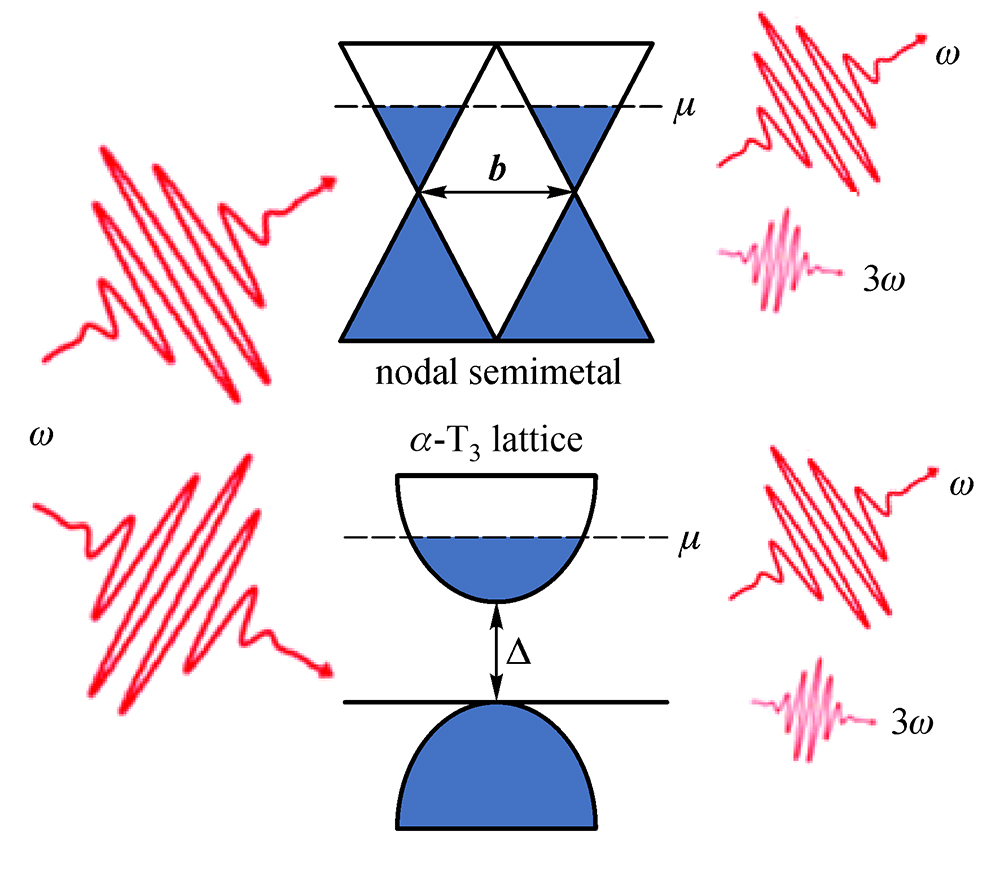The
a-T
3 model is best described as an interpolation model between graphene and dice (or T
3) lattice. The interpolation procedure is described by moveable atoms coupled to one of the two topologically inequivalent atomic sites of each hexagonal unit cell. The parameter
a ∈ [0, 1] describes the distance of each moveable atom from the atomic site to which it is coupled so that if each moveable atom is in the center of the unit cell (
a = 1), the lattice will resemble a dice lattice, and if the moveable atom is not present (
a = 0), the lattice is a standard graphene honeycomb. This two-dimensional (2D) material has recently been fabricated in the (111) direction of SrTiO
3/SrIrO
3/SrTiO
3 [
33] or by confining cold atoms to an optical lattice [
34]. For the intermediate values of
a, there is a significant influence of both the dispersionless flat band and valence band, which results in nontrivial topology [
35–
37], unusual interaction effects [
38–
41], and electronic properties such as super-Klein tunneling [
42–
44], minimal conductivity [
45], orbital magnetic response [
46], and Weiss oscillations [
47].













